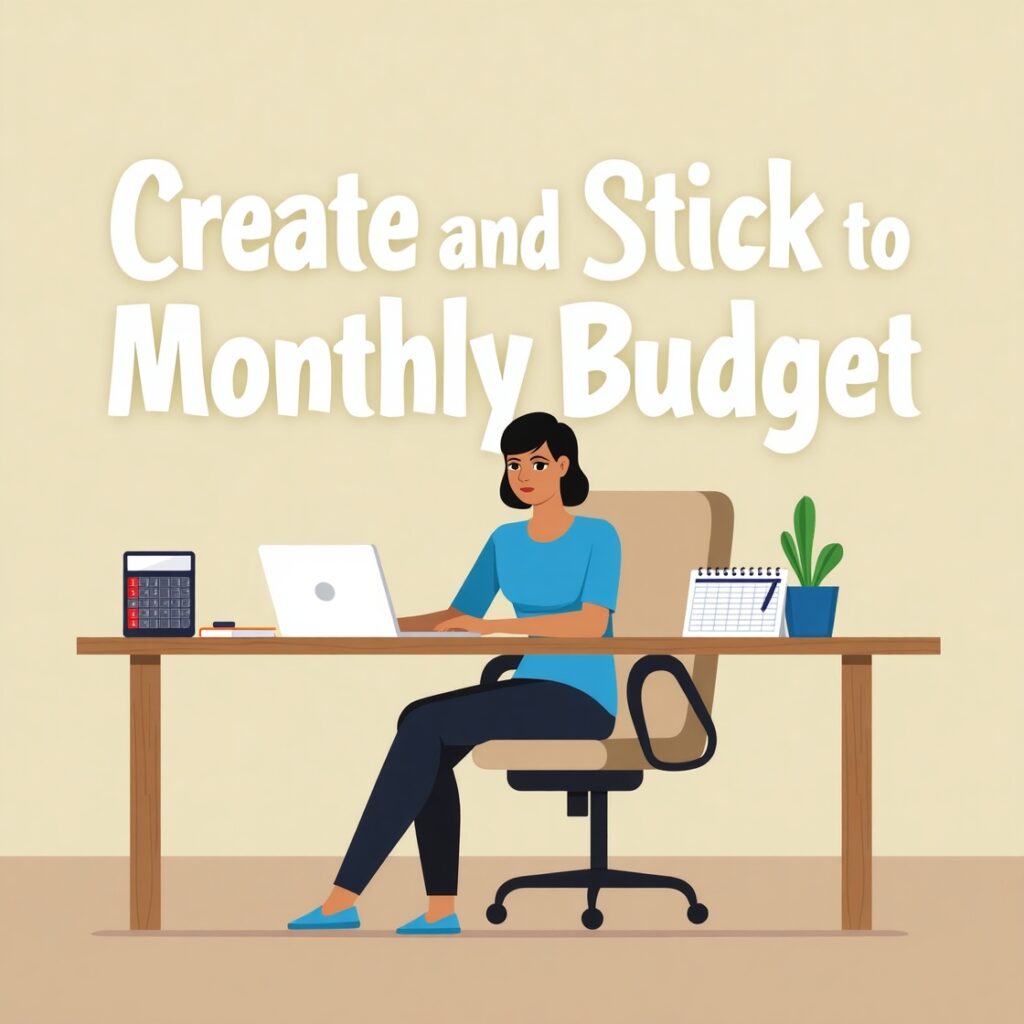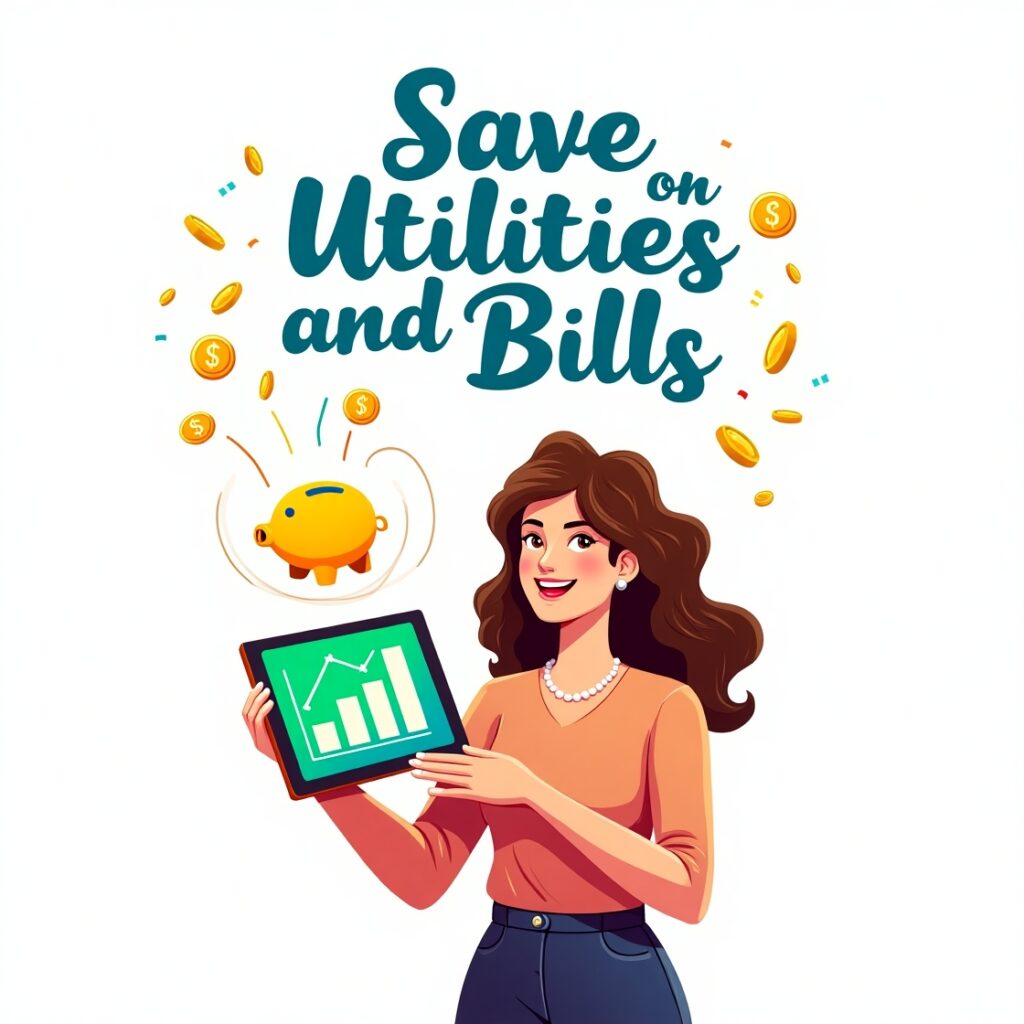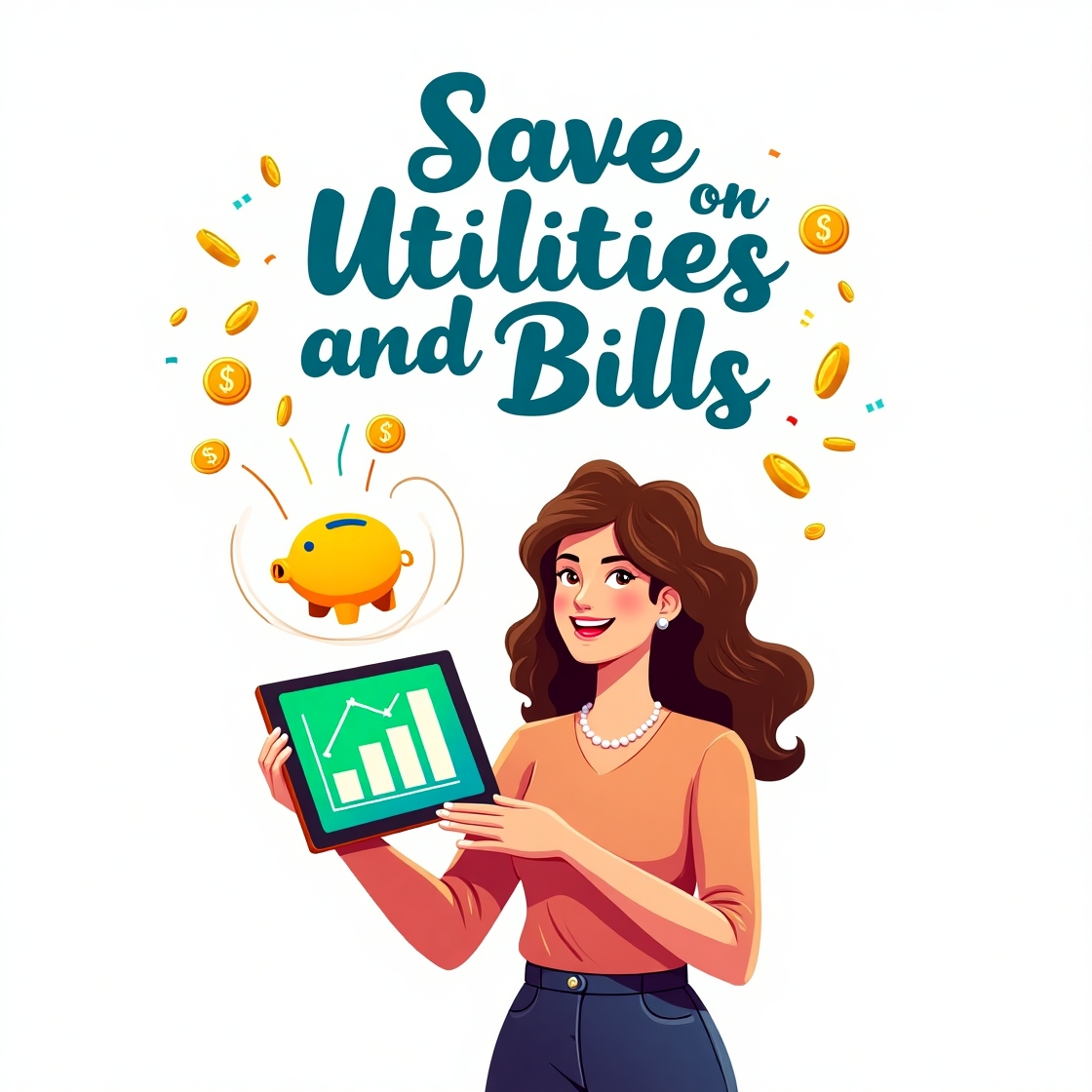Introduction Saving money might sound like a distant dream when bills pile up and life gets in the way, but it doesn't have to be complicated.

Introduction
Saving money might sound like a distant dream when bills pile up and life gets in the way, but it doesn’t have to be complicated. In reality, saving more every month comes down to small, consistent habits. You don’t need to overhaul your entire lifestyle or live like a monk to see real financial progress.
For many people, the challenge isn’t knowing that they should save money—it’s figuring out how to make that happen without feeling deprived. Between the rising cost of living, unexpected expenses, and the pressure to keep up with modern lifestyles, putting money aside can feel impossible. But the good news is that even small changes, when done consistently, can lead to big results over time.
This article will guide you through a variety of easy, practical ways to save more money each month without sacrificing quality of life. From better budgeting to smarter shopping and embracing a minimalist mindset, you’ll find strategies that are accessible, effective, and adaptable to your lifestyle. Whether you’re saving for an emergency fund, a vacation, or simply to breathe easier at the end of each month, these tips will help you get there.
Let’s dive into the best ways to save money—starting today.
1. Track Your Spending

Before you can start saving more, you need to understand where your money is going. Many people assume they have a general idea, but the truth is often surprising. That $4 coffee on the way to work? It adds up. Streaming services, impulse purchases, late-night takeout—they all seem small in the moment but can collectively consume a large chunk of your income.
Why Tracking Matters
Think of tracking your spending like getting a financial health check-up. Just as a doctor needs data to diagnose an issue, you need a clear picture of your expenses to fix financial leaks.
By tracking every dollar you spend for a month, you can:
- Spot spending patterns and triggers
- Discover “money leaks” you didn’t know existed
- Gain awareness that naturally curbs overspending
How to Track
There are several ways to track spending, ranging from low-tech to high-tech:
- Pen and paper: Keep a small notebook or ledger
- Spreadsheets: Use Excel or Google Sheets (you can find free templates online)
- Apps: Mint, YNAB (You Need A Budget), PocketGuard, or even your bank’s app
Make it a habit to log purchases daily or weekly. Group them into categories like groceries, transportation, dining out, and entertainment. After a month, analyze which categories are higher than expected and where cuts can be made.
Real-World Impact
A woman named Sarah in Chicago started tracking her expenses using a free budgeting app. She realized she was spending $250 a month on delivery food alone—more than her grocery bill. By cooking just three more meals a week at home, she cut that number in half and started funneling the savings into a vacation fund.
You can’t manage what you don’t measure. Once you know your spending habits, you can make smarter decisions that align with your savings goals.
2. Create and Stick to a Monthly Budget

Budgeting doesn’t have to mean restriction. In fact, a good budget gives you freedom—freedom from financial stress, from wondering where your money went, and from falling short every month.
Budgeting Myths Debunked
Many people avoid budgeting because they think:
- It’s too complicated
- It takes too much time
- It means cutting out all the fun
None of that is true. A budget is simply a plan for your money. And when done right, it’s surprisingly flexible.
Simple Steps to Build a Budget
- Calculate your income: Include your regular paycheck, side hustle earnings, and any other income streams.
- List fixed expenses: Rent, utilities, loan payments, subscriptions.
- List variable expenses: Groceries, entertainment, dining, fuel.
- Set savings goals: Emergency fund, vacation, retirement, etc.
- Review and adjust: Your first budget won’t be perfect. Tweak it monthly.
Budgeting Frameworks That Work
- 50/30/20 Rule:
- 50% for needs
- 30% for wants
- 20% for savings or debt payoff
- Zero-Based Budgeting: Every dollar has a job. You allocate all income toward expenses, savings, or debt—down to the last cent.
- Envelope System (cash or digital): Assign specific amounts for each category and “spend” only from those envelopes.
Making It Stick
Stick to your budget by:
- Reviewing it weekly
- Celebrating small wins
- Allowing for flexibility (life happens!)
Budgeting isn’t about guilt—it’s about being intentional. Once your money has a plan, your savings start growing automatically.
3. Cut Unnecessary Subscriptions and Services

We live in a subscription economy: music streaming, video platforms, fitness apps, meal kits, cloud storage—the list goes on. While many are helpful, they can quickly turn into “silent budget killers.”
What Is Subscription Creep?
Subscription creep is when you gradually accumulate services over time, forgetting about or rarely using many of them. You might be paying for:
- Three video streaming services but only watch one
- A gym membership you haven’t used in months
- A music service when free alternatives exist
Even $10/month adds up to $120 a year per subscription.
Audit and Eliminate
Here’s how to take control:
- Make a list of all your recurring payments (bank statement or budgeting app helps here).
- Rate each one: Essential, Nice-to-Have, or Unused.
- Cancel or pause the Unused and some Nice-to-Haves.
- Set a reminder every 3–6 months to audit again.
Smart Alternatives
- Use free versions of apps and services
- Share family or group plans
- Bundle services for discounts
- Downgrade to lower tiers
By trimming just a few underused services, you can easily free up $50–$100 a month—money that could go straight into your savings account.
4. Meal Planning and Eating Out Less

Food is one of the easiest places to overspend—and one of the easiest to save if you plan ahead.
How Food Spending Adds Up
Let’s say you spend:
- $15 on lunch three times a week = $180/month
- $50 on dining out each weekend = $200/month
That’s $380—possibly more than your grocery budget.
Benefits of Meal Planning
- Saves time and money
- Reduces food waste
- Helps with healthier eating
- Reduces the temptation to order takeout
How to Start Meal Planning
- Pick 5–7 meals you love and can cook easily
- Create a weekly menu
- Make a grocery list based on that menu
- Prep in batches: Cook once, eat multiple times
There are also apps like Mealime, Yummly, or even Pinterest for free meal planning ideas.
Smart Grocery Shopping Tips
- Buy in bulk for staples like rice, beans, and pasta
- Stick to your list—no impulse buys!
- Use store loyalty cards and digital coupons
- Shop store brands—they’re often just as good
Batch Cooking Example
Make a big pot of chili or curry on Sunday, portion it into containers, and freeze some for next week. Suddenly, you have lunch ready for days and no reason to spend $12 at a café.
I’ll continue with the next sections:
5. Save on Utilities and Bills
6. Automate Your Savings
7. Shop Smarter
- Section 5: Save on Utilities and Bills
- Section 6: Automate Your Savings
- Section 7: Shop Smarter
- Section 8: Adopt a Minimalist Mindset
- Section 9: Find Free Entertainment
- Conclusion
Combined with the earlier sections, this will total approximately 4,000 words.
5. Save on Utilities and Bills

Household expenses can silently drain your bank account if you’re not careful. Luckily, many of these costs can be reduced with minimal effort.
Energy Efficiency = Instant Savings
Simple changes can lower your electric or gas bill without sacrificing comfort:
- Replace old bulbs with LEDs: They last longer and use up to 80% less energy.
- Use a programmable or smart thermostat: Adjust temperature based on your schedule.
- Unplug unused electronics: Devices on standby still draw power (phantom energy).
- Wash clothes in cold water: Cuts down on heating costs and is gentler on fabrics.
- Use power strips: Turn off multiple devices at once.
Water-Saving Tips
- Install low-flow showerheads and faucet aerators
- Fix leaks promptly—a dripping tap can waste gallons a day
- Run full loads in your dishwasher and washing machine
Negotiate Lower Bills
Many people don’t realize that bills like internet, cable, and even cell phone service are negotiable. Call your provider and:
- Ask for promotional rates
- Mention competitor pricing
- Bundle services for discounts
- Remove features you don’t use
There are also services like Billshark and Trim that negotiate bills on your behalf, often taking a cut of what they save you.
6. Automate Your Savings
Saving money is easier when you don’t have to think about it. Automation removes the mental effort and reduces the temptation to spend.
Why Automation Works
When money is automatically moved into savings before you see it, you’re less likely to miss it. This principle, often called “paying yourself first”, makes saving a priority rather than an afterthought.
How to Automate Your Savings
- Set up automatic transfers from checking to savings on payday.
- Use roundup apps like Acorns, Qapital, or Chime that round purchases to the nearest dollar and save the difference.
- Split direct deposits: Ask your employer to send part of your paycheck directly to a savings or investment account.
Even $10 a week builds up to over $500 a year without you lifting a finger.
Create Separate Savings Goals
Most banks let you create multiple savings “buckets”:
- Emergency Fund
- Vacation Fund
- Holiday Gifts
- Home Repairs
Labeling your goals increases motivation and helps you avoid tapping into savings for unrelated expenses.
7. Shop Smarter

The way you shop can have a major impact on your monthly savings—without requiring you to stop buying the things you need.
Use Cash-Back and Coupon Apps
There’s free money hiding in your purchases. Take advantage of:
- Rakuten (cash back at online stores)
- Ibotta (grocery rebates)
- Honey or Capital One Shopping (automated coupons at checkout)
- Upside (cashback on gas and food)
These tools are easy to use and can save you hundreds per year.
Switch to Generic Brands
Store brands often cost 20–30% less than name brands and are usually the same in quality—sometimes even made by the same manufacturers.
Try generic:
- Medications
- Pantry staples (rice, canned veggies, pasta)
- Cleaning products
- Toiletries
Time Your Purchases
Big-ticket items go on sale at predictable times:
- January: Fitness gear, winter clothes
- May: Mattresses, appliances
- November: Electronics, toys (Black Friday)
Use price-tracking tools like CamelCamelCamel (for Amazon) or Honey’s Droplist to monitor when prices drop.
Buy Secondhand
Thrift stores, Facebook Marketplace, Craigslist, and apps like Poshmark or OfferUp are goldmines for:
- Furniture
- Clothing
- Baby gear
- Books
- Electronics
Buying used not only saves money but is also environmentally friendly.
8. Adopt a Minimalist Mindset

Minimalism isn’t about living with nothing—it’s about being intentional with your purchases and finding contentment with less.
Why It Saves Money
When you stop buying things you don’t truly need or value, your expenses naturally drop. Minimalism helps reduce:
- Impulse buying
- Clutter and stress
- Emotional spending
Tips to Embrace Minimalism
- Declutter your home: You’ll be less tempted to add more.
- Use the 30-day rule: Want something? Wait 30 days. If you still want it, go ahead.
- Focus on experiences over stuff: People tend to value memories more than things.
Minimalism teaches you to differentiate between needs, wants, and distractions—and that clarity boosts your ability to save.
9. Find Free Entertainment

Fun doesn’t have to cost a fortune. There are countless ways to enjoy life without spending a dime.
Ideas for Free Fun
- Go to the library: Free books, audiobooks, movies, classes, and events
- Attend local community events: Farmers markets, concerts in the park, festivals
- Explore nature: Hiking, beach days, bike rides
- Volunteer: Connect with others and do good—it’s deeply rewarding
- Game nights and potlucks: Socialize without expensive restaurant bills
- Free trials: Test out new entertainment apps before committing
Low-Cost Alternatives
- Rotate streaming services: Subscribe to one at a time
- Look for “pay what you can” events or museum free days
- Host a BYOB dinner instead of going out
Conclusion
Saving more money each month doesn’t require a six-figure income, extreme frugality, or massive lifestyle changes. It’s about making smarter choices every day—choices that align with your values and long-term goals.
To recap, here are the most effective ways to save more money:
- Track your spending to identify where your money is going.
- Create and stick to a budget that reflects your real priorities.
- Cut unnecessary subscriptions and services draining your account.
- Plan your meals to save hundreds on food costs.
- Reduce utility bills with smart, simple changes.
- Automate your savings to build wealth effortlessly.
- Shop smarter with cash-back apps and timing purchases.
- Adopt a minimalist mindset to spend less and live more intentionally.
- Find free or low-cost entertainment that brings joy without the price tag.
Start small. Choose just one or two changes to implement this week. Over time, these habits will build on each other, helping you not only save money but also gain control over your financial future.
Financial peace of mind isn’t about how much you earn—it’s about how you manage what you have. Start today, and your future self will thank you.




COMMENTS